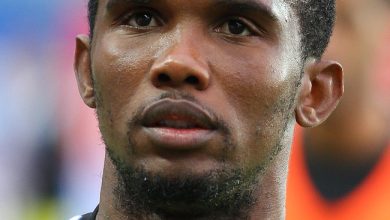Inside the Kaaba Mecca’ The Spiritual Epicenter of Muslims

Nestled at the heart of Al-Haram mosque in Makkah, the Kaaba stands as an emblem of profound significance in Islamic culture.
This sacred structure, shrouded in mystery and reverence, draws millions of pilgrims annually, who embark on the sacred journey of Hajj or Umrah to pay homage to Allah.
Yet, despite its iconic stature, the contents within the Kaaba remain veiled in secrecy, known only to a select few.
In this exploration, we delve into the rich history, architectural marvels, and spiritual symbolism enshrined within the sanctified walls of the Kaaba.
Unveiling the Kaaba: A Journey Inside
**1. ** Historical Origins and Evolution
Constructed by the Prophet Ibraham and his son Ismael, the Kaaba stands as a testament to devotion and reverence towards Allah.
Over the centuries, this sacred edifice has undergone numerous renovations and expansions, transforming its exterior and interior into a spectacle of architectural grandeur.
Notably, in the 1950s, the Saudi Arabian government undertook extensive renovations to accommodate the burgeoning influx of pilgrims, expanding the boundaries of the mosque to encompass over 40 acres of sacred ground.
**2. ** Architectural Marvels
The Kaaba, characterized by its cubical form and towering 15-meter stature, commands awe and reverence from believers worldwide. Each corner meticulously aligns with the cardinal directions, symbolizing the universal reach of Islamic faith.
Adorned with a door embellished in solid gold, the Kaaba exudes opulence and majesty, captivating the senses of all who behold it.
Moreover, the black silk cloth, known as the Kiswah, cloaks the Kaaba, adorned with intricate calligraphy in gold thread, depicting verses from the Quran—a testament to the divine presence enshrined within.
**3. ** Spiritual Significance
Beyond its physical magnificence, the Kaaba holds profound spiritual significance in Islamic theology.
Serving as a metaphorical abode of Allah, it symbolizes the unity and oneness of the divine entity in Islamic beliefs.
Historically, the Kaaba played a pivotal role in the abolition of polytheism, as Prophet Muhammad (PBUH) restored it as a center for monotheistic worship, heralding the dawn of Islam.
Moreover, the Black Stone, embedded within the walls of the Kaaba, serves as a symbol of unity and sanctuary for Muslims worldwide, epitomizing the omnipresence of Allah.
ALSO READ: Who is the Prophet Muhammad
Exploring the Secrets of the Kaaba: A Symbol of Divine Presence
Nestled amidst the bustling Grand Mosque, the Kaaba stands as a solemn testament to the spiritual heritage of Islam.
Derived from the Arabic word for “cube,” the Kaaba’s enigmatic allure has captivated believers for centuries. In this captivating exploration, we delve into the sacred confines of the Kaaba, unraveling its mysteries and unveiling its hidden treasures.
Khana Kaaba: An Architectural Marvel
**1. ** Dimensions and Structure
Spanning an impressive 180 square meters, the Kaaba’s imposing presence commands reverence and awe.
Supported by three ancient wooden columns, each over 1,350 years old, the Kaaba’s structure stands as a testament to the ingenuity of its builders.
Crafted by the esteemed Abdullah bin Zubair, a revered Muslim leader and compiler of the Quran, these pillars serve as guardians of the sacred space, symbolizing the enduring legacy of faith.
**2. ** Intricate Design and Decoration
Step inside the Kaaba, and you’ll be greeted by a breathtaking display of craftsmanship and artistry.
The floor, crafted from exquisite marble, exudes elegance and grandeur, while the walls are adorned with vibrant marbles, each bearing witness to the rich tapestry of Islamic heritage.
Red silk curtains, adorned with delicate white embroidery, drape the interior, casting an ethereal glow upon the sacred space.
Eight stones, inscribed with Arabic calligraphy, adorn the walls, their ancient scripts whispering tales of devotion and piety.
**3. ** The Sanctity of Prayer
Amidst the hallowed confines of the Kaaba, pilgrims find solace and spiritual nourishment, guided by the footsteps of Prophet Muhammad himself.
Markings on the floor denote the spot where the Prophet is believed to have prayed upon entering the Kaaba, serving as a poignant reminder of his profound connection to this sacred space.
Yet, during the bustling pilgrimage of Hajj, the Kaaba remains closed to all but a select few, reserved for dignitaries and custodians entrusted with its upkeep and sanctity.
ALSO READ: What Was The Oldest Religion in the World
Deciphering the Black Stone: A Sacred Relic with a Storied Past
The Kaaba, the revered sanctuary at the heart of Islam, harbors within its confines a remarkable artifact—the Black Stone.
Shrouded in myth and legend, this ancient stone holds profound significance for millions of Muslims worldwide.
In this comprehensive exploration, we delve into the history, significance, and folklore surrounding the enigmatic Black Stone housed within the Kaaba.
The Origins of the Black Stone: Myth and Legend
**1. ** An Ancient Relic with Mythical Roots
According to Islamic tradition, the Black Stone, nestled within the walls of the Kaaba, traces its origins back to the time of Adam and Eve.
Initially white in color, the stone is said to have darkened over time, absorbing the sins of pilgrims who reverently touched and kissed it during their sacred rituals.
Despite its sacred stature, the Black Stone has not been immune to controversy and theft, with historical accounts documenting its abduction by fanatics in 930 AD.
Today, under the vigilant protection of 24 guards, the Black Stone remains a symbol of divine presence and spiritual reverence.
**2. ** The Rituals and Symbolism of the Black Stone
Measuring 30cm in diameter and positioned 1.5 meters above the ground, the Black Stone serves as a focal point for pilgrims performing the Tawaf—the circumambulation of the Kaaba.
As worshippers circle the sacred structure, they strive to kiss or touch the Black Stone, symbolizing their submission to the divine will of Allah.
For those unable to reach the stone, a symbolic gesture of pointing suffices, accompanied by the recitation of takbeer, “Allahu Akbar.”
This ritual underscores the deeply ingrained symbolism and spiritual significance of the Black Stone in Islamic theology.
**3. ** Legends and Lore Surrounding the Black Stone
Numerous folktales abound regarding the origins and significance of the Black Stone within the Kaaba.
One popular theory suggests that Prophet Ibrahim and his son Ismael discovered the stone while seeking materials to construct the Kaaba.
Recognizing its intrinsic value, they placed it at one of the corners of the sacred structure, imbuing it with divine significance for generations to come.
Such legends serve to enrich the tapestry of Islamic heritage, further deepening the mystique surrounding the Black Stone and its place within the annals of history.
Facts and Trivia: Unveiling the Hidden Gems of the Holy Kaaba
- The Kaaba has undergone numerous reconstructions throughout history, with the latest renovation taking place in 1999 to preserve its sanctity and integrity.
- Prior to being draped in the iconic black Kiswa, the Kaaba was adorned with various colors, including green, white, and red, reflecting the evolving aesthetics of Islamic tradition.
- In antiquity, the Kaaba served as a repository for idols worshipped by pagan tribes before the advent of Islam, underscoring its transformative role in religious history.
- Within the sacred precincts of the Kaaba lies a plaque bearing the names of rulers who contributed to its reconstruction, serving as a testament to their enduring legacy.
ALSO READ: The Difference between Sunni and Shai Muslims
Exploring the Sacredness of the Kaaba: A Divine Symbol for Muslims Worldwide
The Kaaba stands as the epitome of sanctity and reverence in Islam, revered as the holiest place on Earth by millions of Muslims worldwide.
Nestled within the confines of the Al-Haram mosque in Makkah, the Kaaba serves as the focal point of pilgrimage and worship, embodying the spiritual aspirations and devotion of believers.
In this comprehensive guide, we delve into the significance, structure, and spiritual symbolism of the Holy Kaaba, unraveling its mysteries and unveiling its sacred secrets.
Understanding the Holy Kaaba: A Divine Edifice of Spiritual Significance
**1. ** Origins and Builders of the Kaaba
The Kaaba, meaning ‘cube’ in Arabic, was constructed by the Prophet Ibraham (PBUH) and his son Ismael as a testament to their unwavering faith and devotion to Allah.
Its origins trace back to the dawn of humanity, symbolizing the oneness and omnipresence of the divine in Islamic theology.
For Muslims, the Kaaba represents the physical manifestation of Allah’s presence on Earth, a sacred sanctuary where prayers are offered and sins are forgiven.
**2. ** Dimensions and Architectural Marvels
Spanning an area of 180 square meters, the Kaaba stands as a towering symbol of spiritual magnificence, its structure supported by three ancient wooden columns dating back over 1,350 years.
These pillars, attributed to the craftsmanship of Abdullah bin Zubair, serve as a testament to the enduring legacy of Islamic heritage.
The interior of the Kaaba, shrouded in mystery and reverence, houses a plaque bearing the names of rulers who contributed to its renovations over the centuries, a testament to their enduring legacy and devotion to the preservation of Islamic heritage.
**3. ** Spiritual Significance and Access
The Holy Kaaba, also known as Khana Kaaba, holds profound spiritual significance for Muslims, serving as a metaphorical abode of Allah’s residence.
While historically accessible to all Muslims, today, entry into the inner sanctum of the Kaaba is restricted to dignitaries and custodians entrusted with its upkeep and sanctity.
This exclusivity underscores the reverence and sanctity with which the Kaaba is regarded by believers worldwide, symbolizing the path to spiritual enlightenment and divine communion.
ALSO READ: Discuss the Five Pillars of Islam’ The Bedrock of Islamic Practice
Frequently Asked Questions About the Holy Kaaba
- What is the significance of the holy Kaaba?
- The Kaaba symbolizes the oneness and omnipresence of Allah in Islamic beliefs, serving as a sacred sanctuary for prayer and spiritual communion.
- Who built the holy Kaaba?
- The Kaaba was constructed by Prophet Ibraham (PBUH) and his son Ismael as an expression of devotion and reverence to Allah.
- What is the area and structure of the holy Kaaba?
- The Kaaba covers an area of 180 square meters and is supported by three ancient wooden columns, each over 1,350 years old.
- Is the inside of the holy Kaaba accessible to all?
- In the past, the Kaaba was open to all Muslims, but today, access to its inner sanctum is restricted to Muslim dignitaries and custodians entrusted with its upkeep.
Conclusion: Embracing the Spiritual Legacy
In conclusion, the Holy Kaaba stands as a timeless symbol of spiritual devotion and reverence in Islam, beckoning believers from all corners of the globe to embark on a journey of spiritual enlightenment and divine communion.
As pilgrims converge upon its sacred precincts, they are enveloped by the echoes of history and the timeless reverence for the divine embodied by the Kaaba. It serves as a beacon of hope and faith, guiding believers on a path of piety, humility, and eternal happiness.
For further insights into the significance of the Holy Kaaba and Islamic heritage, visit reputable sources such as IslamicFinder and Islamicity.





